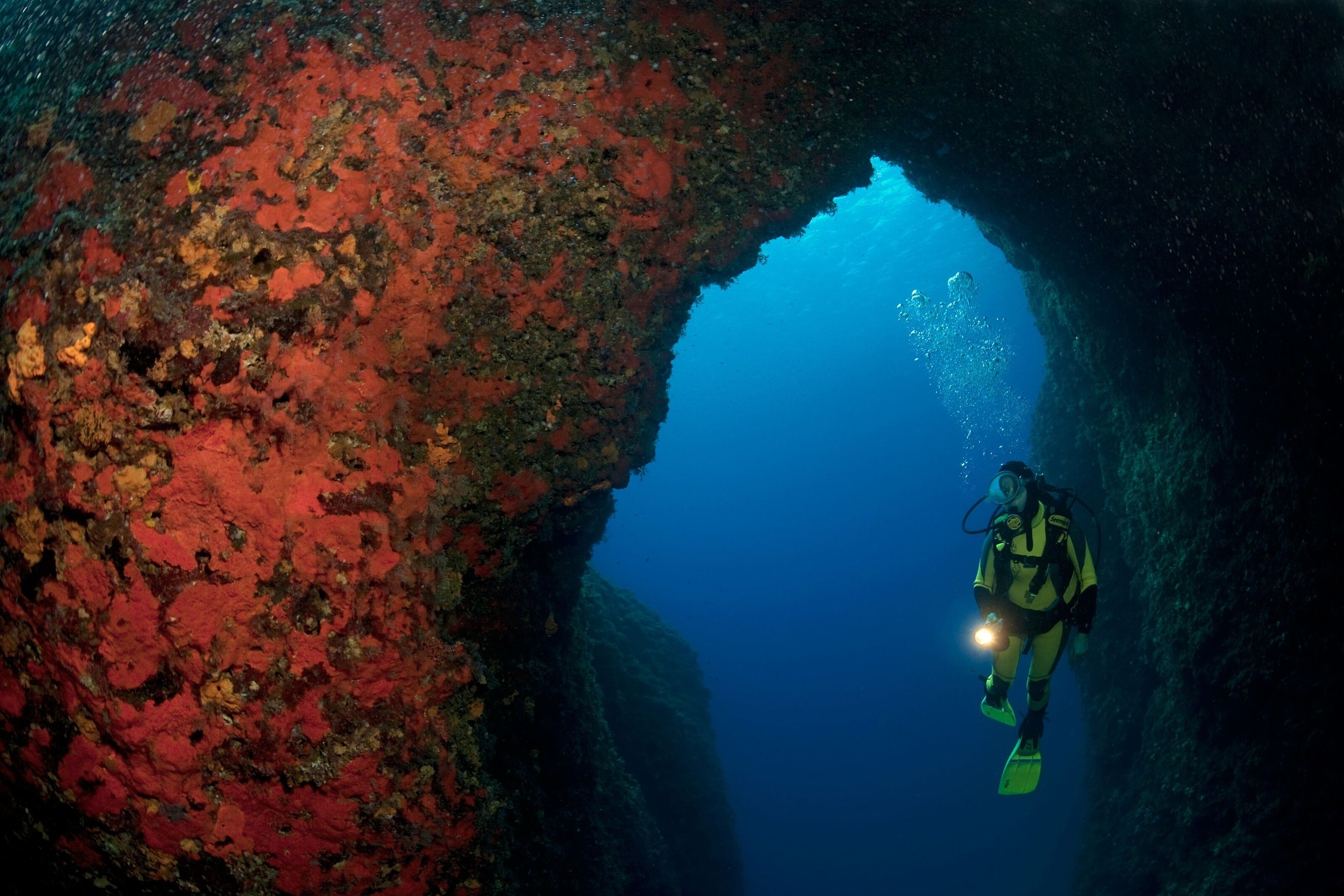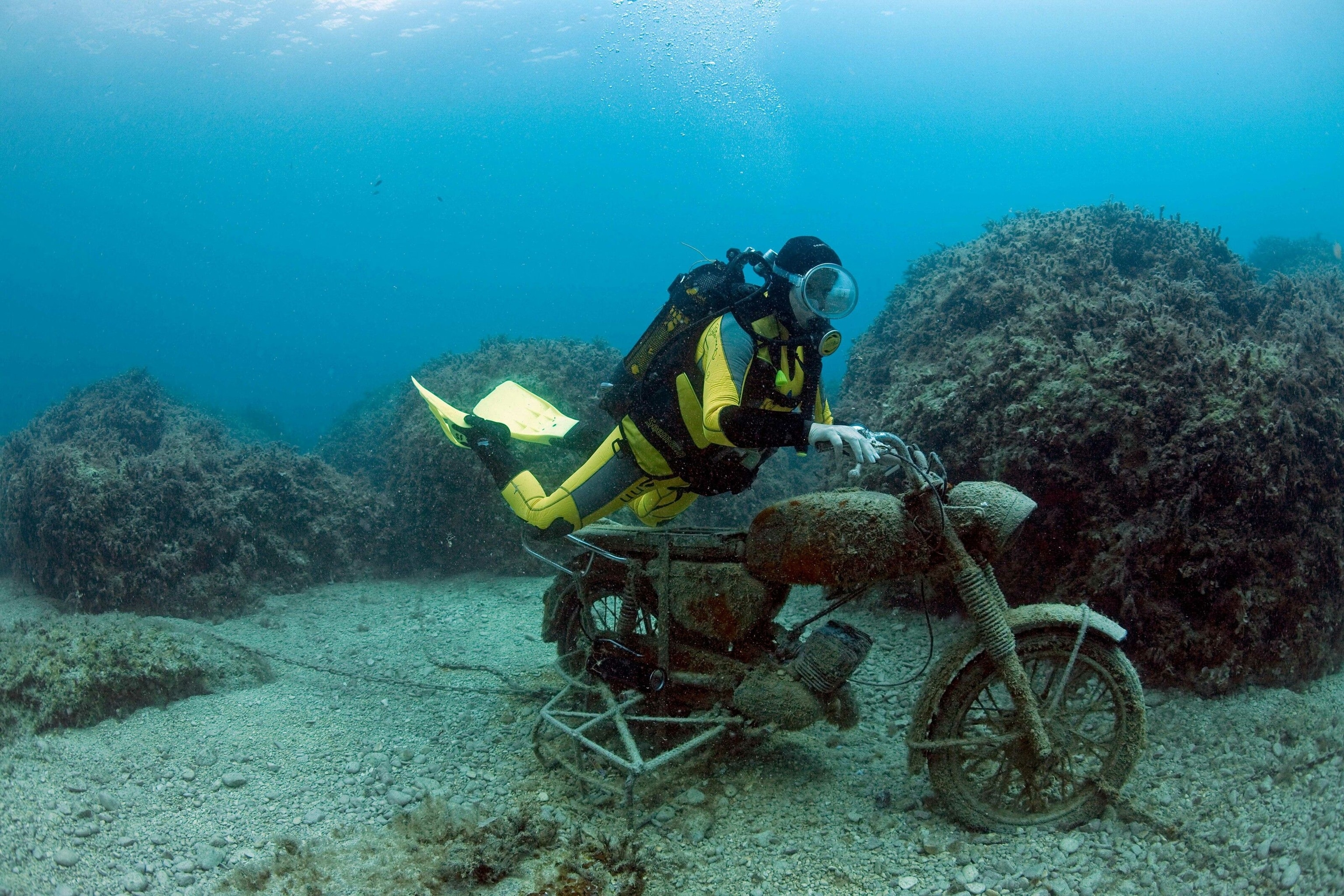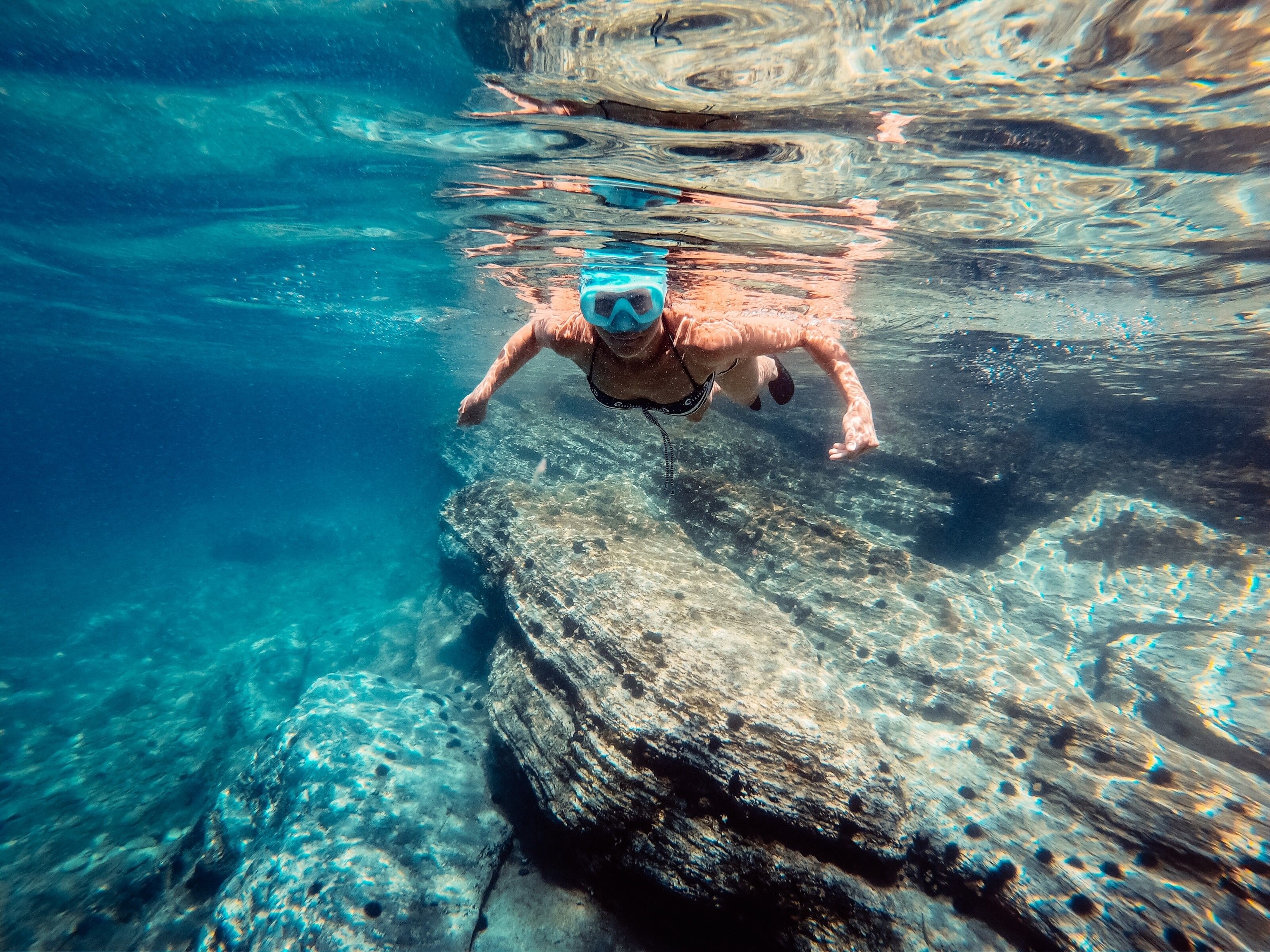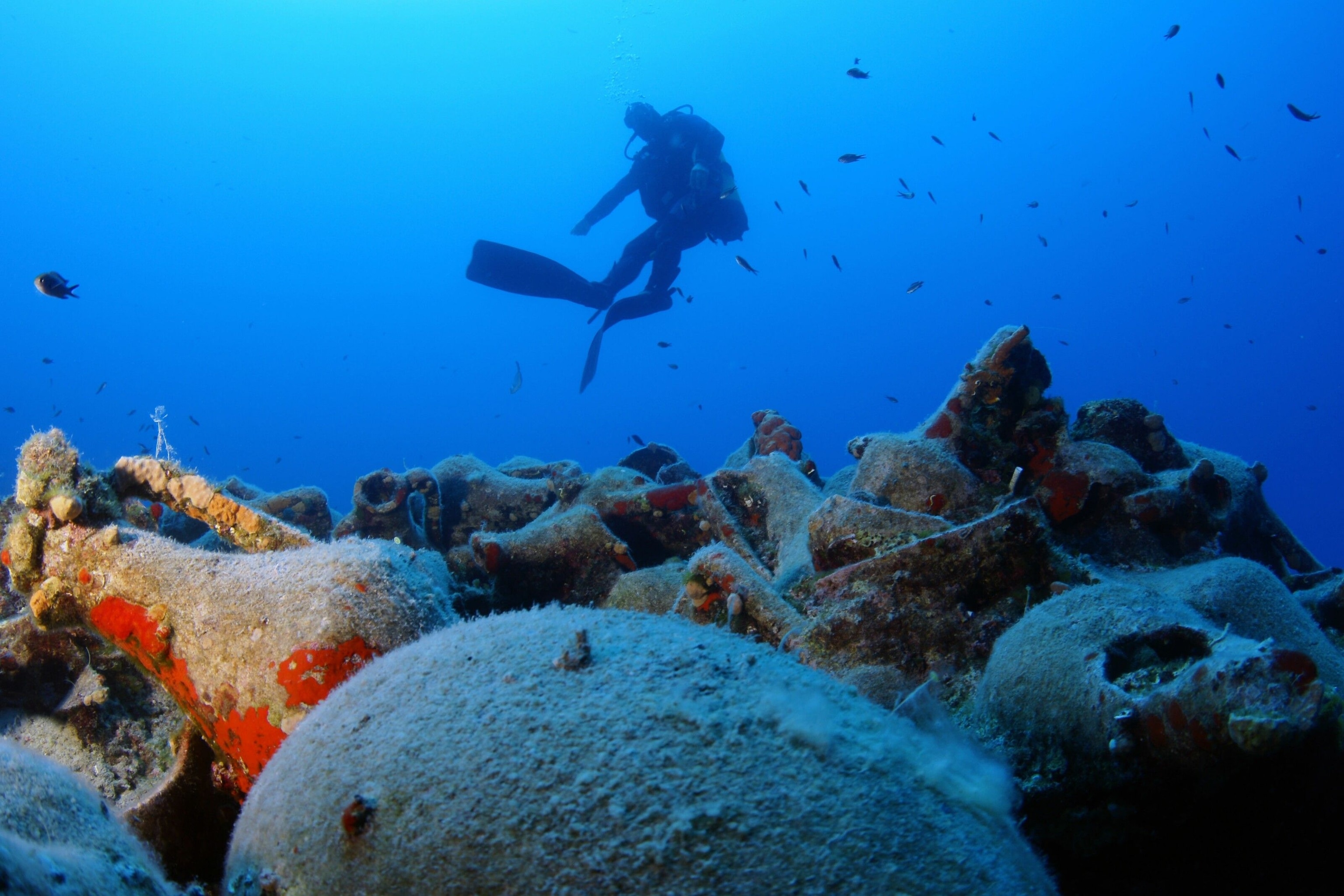
Five of the best diving locations in Greece
A fifth-century shipwreck in the Sporades archipelago and a kaleidoscope of underwater wildlife in Zakynthos are just a few of the reasons why Greece is the ideal getaway for the curious diver.
The sun-dappled, crystal-clear waters surrounding mainland Greece and its many islands are home to a menagerie of marine life including seals, turtles and moray eels. This — plus the chance to swim among the ruins of cities that have spent thousands of years underwater, along with numerous ancient shipwrecks — is why Greece should be high on any keen diver’s bucket list. New legislation passed in 2020 has also opened up more of the country’s coastline for recreational diving, making it easier to tour the many submerged archaeological sites with the help of certified local diving clubs. Below, we pick out five destinations guaranteed to please both novices and experienced divers.
1. Pavlopetri, the Peloponnese
Dive down to a sunken city
Even if you’re not a qualified diver, it’s still possible to go snorkelling and view fascinating underwater sights and marine life in Greece’s azure seas. A superb example is the remains of the 5,000-year-old sunken city of Pavlopetri, which lie in the shallow waters of Vatika Bay, best accessed from the beaches of Pounta in the southern Peloponnese. The closest main city to the site is Neapoli, but a blissful base for exploring this region is the island of Elafonisos, which offers spectacular white sand beaches and the chance to spot loggerhead turtles. Recreational diving is banned at Pavlopetri, so the only way to see the UNESCO-protected site is by snorkelling. Although you’ll have to use your imagination to work out the city’s layout from the underwater remnants, Pavlopetri, which thrived for around 2,000 years before it was claimed by the sea, represents one of Europe’s first ‘planned’ cities, with distinct residential and commercial neighbourhoods.

2. Zakynthos, Ionian Islands
Discover a world of marine life
The turquoise waters around crab claw-shaped Zakynthos make it the go-to diving destination of the Ionian Islands. Base yourself in Zakynthos Town, the island’s capital, which has a showstopper of a waterfront and is overlooked by the remains of a Venetian fortress. Gerakas Beach, at the tip of the Vasilikos peninsula, is where endangered loggerhead turtles (also known as caretta caretta) come to lay their eggs during the breeding season (May to October) and is part of a National Marine Park covering the Bay of Laganas and stretching out to the Strofades, two small islands 50 nautical miles southern of Zakynthos. As well as turtles, visitors also have the chance to spot rare Mediterranean monk seals here. The coast surrounding the quiet village of Keri is home to at least a dozen dive sites, ranging from vertiginous wall dives plastered in marine life to deep caves where giant shrimps, octopus and slipper lobsters lurk in dark crevices. Marathonisi, an islet just off the southern coast of Zakynthos, offers crystal-clear waters that make it another great spot for both diving and snorkelling.

3. Thasos, Northern Aegean Islands
Explore a 2,500-year-old quarry
Located just six miles off the Macedonian mainland town of Kavala, Thasos’s nickname is the Emerald Isle because it’s so green. In ancient times, this Northern Aegean island prospered thanks to a natural abundance of white marble and gold; there’s a beach, simply known as Marble Beach, about four miles south of the capital Thasos (also called Limenas) where the sand is made up of innumerable tiny brilliant white crumbs of marble. Further around the southeast coast is the archaeological site of Aliki where marble was quarried for centuries. Part of this 2,500-year-old quarry is submerged under the sea making for a unique dive site. The San Antonio rocks, close to the resort of Potos on the island’s southwest coast, make for an ideal site for novice divers. Among the marine life are moray, tuna and groupers darting amid the orange coral and sponges. More experienced divers will relish the deep-water challenge of the Giola Archangelos wall where submarines hid during the Second World War. It’s now a habitat for scorpion fish, anemones and sea turtles.

4. Amorgos, Cyclades Islands
Admire sea life and soft coral
Featured in Luc Bresson’s cult 1988 film The Big Blue, the beautiful island of Amorgos in the Cyclades is the place to experience the thrill of free-diving. There are dive operations in both of the island’s ports — Katapola and Aegiali — to assist you in exploring these reef and shipwrecked-filled seas, blessed with incredible water visibility and sea life including barracuda, damselfish and tuna. One of the best dive sites can be accessed off Agios Pavlos Beach. Here, the Nikouria’s Cavern is decorated with sponges and soft coral in all the shades of the paint box and provides a habitat for spiral worms and other fascinating micro marine life. It’s an hour’s boat ride from Amorgos to the island of Kinaros to dive the wreck of the cargo ship Manina 3, which sunk in 1981. Still partly visible above the water, the ship’s top deck is at a maximum depth of 50ft and the wreck has become an artificial reef.

5. Alonissos, Aegean Islands
Swim around a fifth-century shipwreck
Europe’s largest marine park covers some 870sq miles around the northern Sporades island of Alonnisos and its neighbouring 29 islands and islets. Declared a national marine park in 1992, it's home to a colony of around 60 endangered Mediterranean monk seals and three species of dolphin. Of the 400-500 Mediterranean monk seals that remain, approximately two thirds of them inhabit Greek waters. Cuvier’s beaked whales and sperm whales have also been sighted here. The main town, Patitiri, is located near the island’s southern tip and is the place for organised diving trips. If you hold an advanced open water diving certification, be sure to book one of the limited slots to explore the fifth-century BC wreck off the islet of Peristera. Dubbed the ‘Parthenon of shipwrecks’, this underwater museum has labelled finds and features a mound of 4,000 mostly intact amphorae. Other popular dive sites include the Blue Cave, where you’ll be able to spot coral, sponges, nudibranchs, scorpion fish and groupers.
For more information, head to visitgreece.gr
Find National Geographic Traveller (UK) on social media






